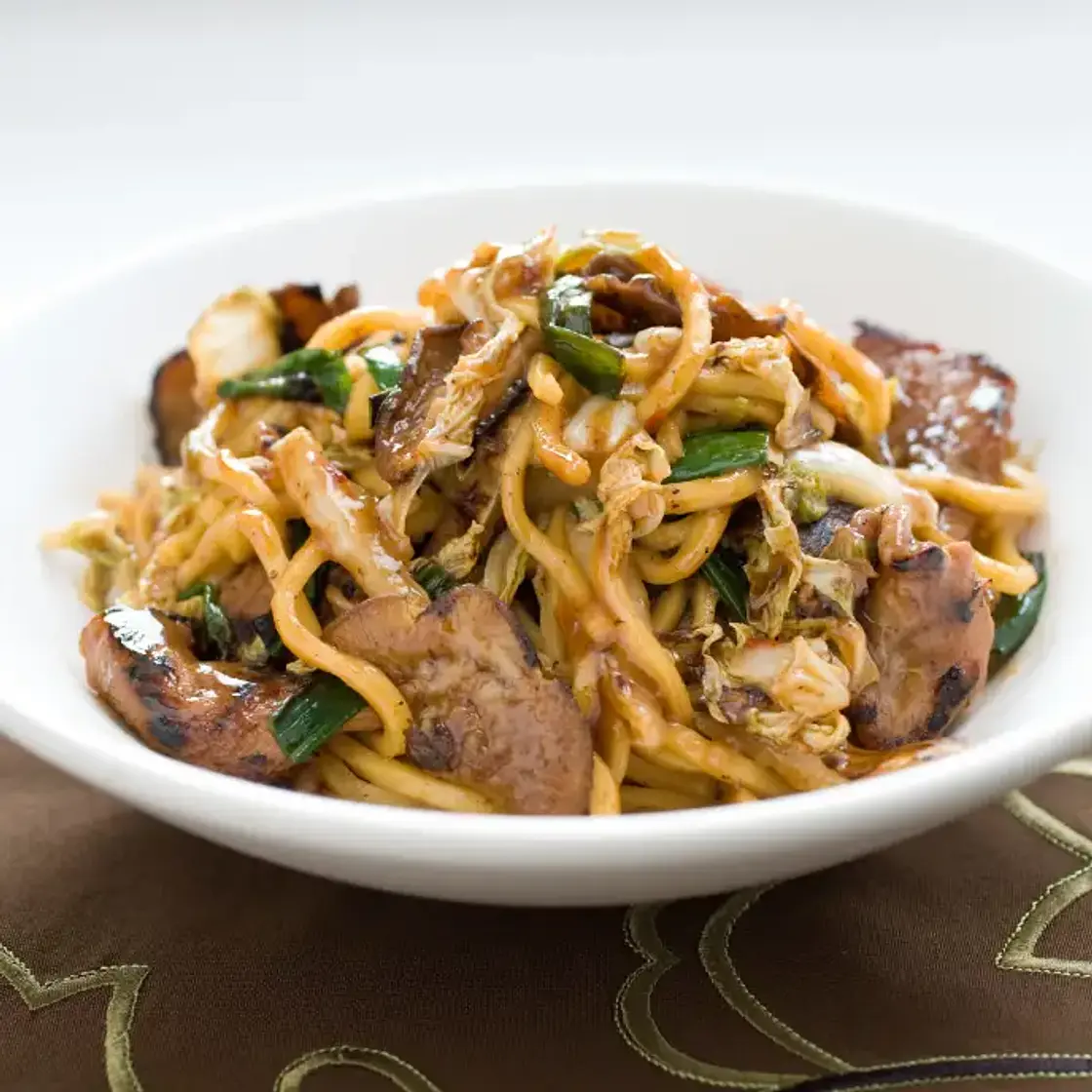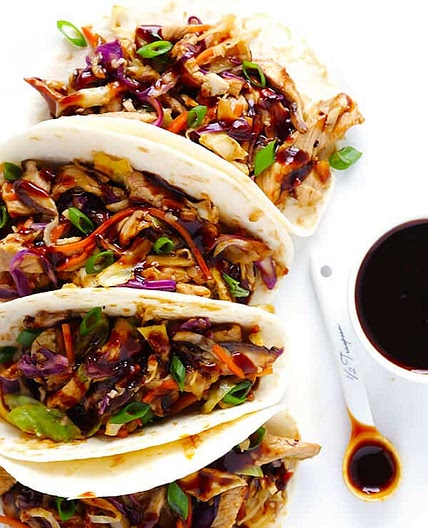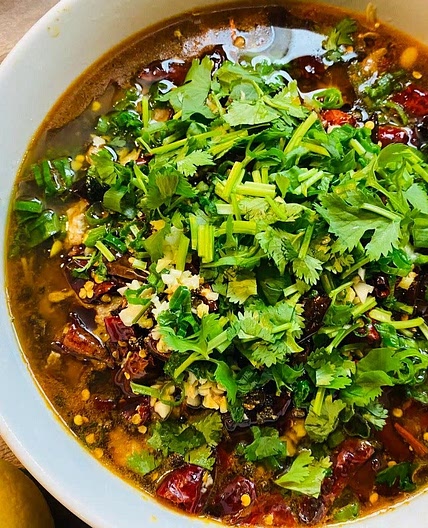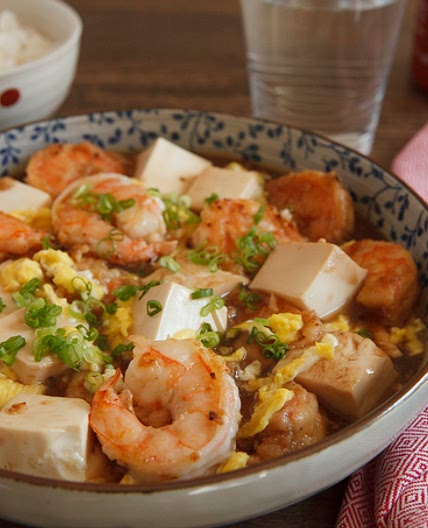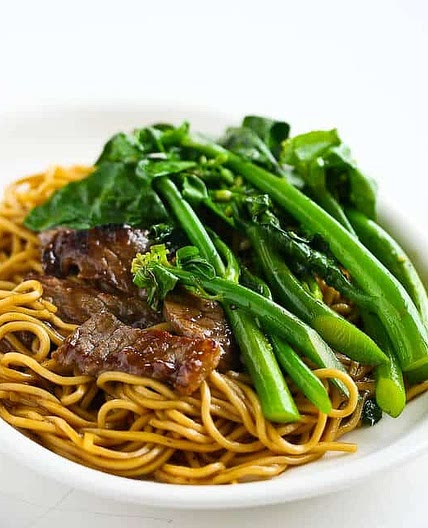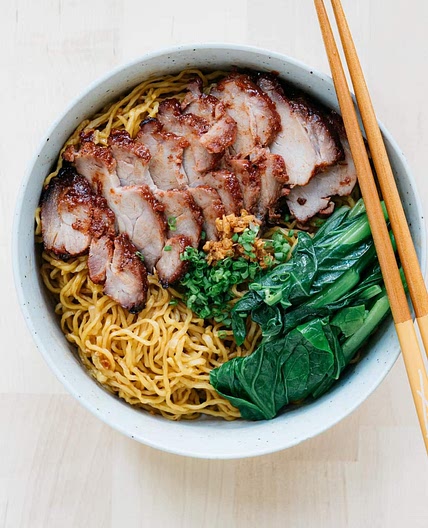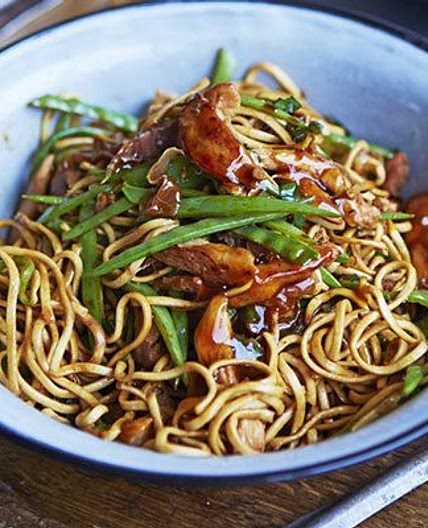By Ian McIntyre
Pork Lo Mein (Altered)
6 steps
Prep:1hCook:30min
Before You Begin:
Use a stainless steel skillet for this recipe if you have one—it will help create the best sear on the pork. Using sherry in our cast iron pan last time took off too much seasoning. When shopping for Shaoxing wine, look for one that is amber in color; if not available, dry sherry may be used as a substitute. If no hoisin sauce is available, substitute 1 tablespoon of sugar. If boneless pork ribs are unavailable, substitute 1 1/2 pounds of bone-in country-style ribs, followed by the next best option, pork tenderloin. Liquid smoke provides a flavor reminiscent of Chinese barbecued pork. In the absence of lo mein noodles, we found that dried linguine worked beautifully here. It is important that the noodles are cooked at the last minute to avoid clumping. See below for information on buying noodles.
Updated at: Mon, 21 Apr 2025 02:12:03 GMT
Nutrition balance score
Good
Glycemic Index
46
Low
Glycemic Load
22
High
Nutrition per serving
Calories576.4 kcal (29%)
Total Fat26.1 g (37%)
Carbs47.1 g (18%)
Sugars8.8 g (10%)
Protein34.6 g (69%)
Sodium735.8 mg (37%)
Fiber5.7 g (21%)
% Daily Values based on a 2,000 calorie diet
Ingredients
4 servings
For the Marinade
2 ½ tablespoonsrice wine vinegar
1 TbspWine
1 tsptoasted sesame oil
¼ cuplow sodium tamari
1 poundboneless country-style pork ribs
trimmed of surface fat and excess gristle and sliced crosswise into 1/8-inch pieces
Meal
¼ teaspoonliquid smoke
optional
½ cuplow-sodium chicken broth
1 teaspooncornstarch
2garlic cloves
medium, minced or pressed through a garlic press
1 teaspoonsfresh ginger
grated
4 ½ teaspoonsvegetable oil
4 Tbsdry sherry
or Shaoxing Wine
0.5 poundshiitake mushrooms
stems trimmed, caps cut in halves or thirds
2 bunchesscallions
whites thinly sliced and greens cut into 1-inch pieces
1 headNapa cabbage
or Chinese, halved, cored, and sliced crosswise into 1/2-inch strips
6 ouncesChinese egg noodles
fresh, or 8 ounces dried linguine
1 tablespoonasian chili-garlic sauce
1yellow onion
medium
1 cupsnap peas
Instructions
Step 1
Bring 4 quarts water to boil in Dutch oven over high heat.
Step 2
Whisk soy sauce, rice vinegar, michiu wine, and sesame oil, together in medium bowl. Place 3 tablespoons soy sauce mixture in large zipper-lock bag; add pork and liquid smoke, if using. Press out as much air as possible and seal bag, making sure that all pieces are coated with marinade. Refrigerate at least 15 minutes or up to 1 hour. Whisk broth and cornstarch into remaining soy sauce mixture in medium bowl. In separate small bowl, mix garlic and ginger with 1/2 teaspoon vegetable oil; set aside.
Step 3
Heat 1 teaspoon vegetable oil in 12-inch cast-iron or nonstick skillet over high heat until just smoking. Add half of pork in single layer, breaking up clumps with wooden spoon. Cook, without stirring, 1 minute. Continue to cook, stirring occasionally, until browned, 2 to 3 minutes. Add 2 tablespoons wine to skillet; cook, stirring constantly, until liquid is reduced and pork is well coated, 30 to 60 seconds. Transfer pork to medium bowl and repeat with remaining pork, 1 teaspoon oil, and remaining 2 tablespoons wine. Wipe skillet clean with paper towels.
Step 4
Return skillet to high heat, add 1 teaspoon vegetable oil, and heat until just smoking. Add mushrooms and cook, stirring occasionally, until light golden brown, 4 to 6 minutes. Add scallions and continue to cook, stirring occasionally, until scallions are wilted, 2 to 3 minutes longer; transfer vegetables to bowl with pork.
Step 5
Add remaining teaspoon vegetable oil and the snow peas and cabbage to now-empty skillet; cook, stirring occasionally, until spotty brown, 3 to 5 minutes. Clear center of skillet; add garlic-ginger mixture and cook, mashing mixture with spoon, until fragrant, about 30 seconds. Stir garlic mixture into cabbage; return pork-vegetable mixture and chicken broth-soy mixture to skillet; simmer until thickened and ingredients are well incorporated, 1 to 2 minutes. Remove skillet from heat.
Step 6
While cabbage is cooking, stir noodles into boiling water. Cook, stirring occasionally, until noodles are tender, 3 to 4 minutes for fresh Chinese noodles or 10 minutes for dried linguine. Drain noodles and transfer back to Dutch oven; add cooked stir-fry mixture and garlic-chili sauce, tossing noodles constantly, until sauce coats noodles. Serve immediately.
